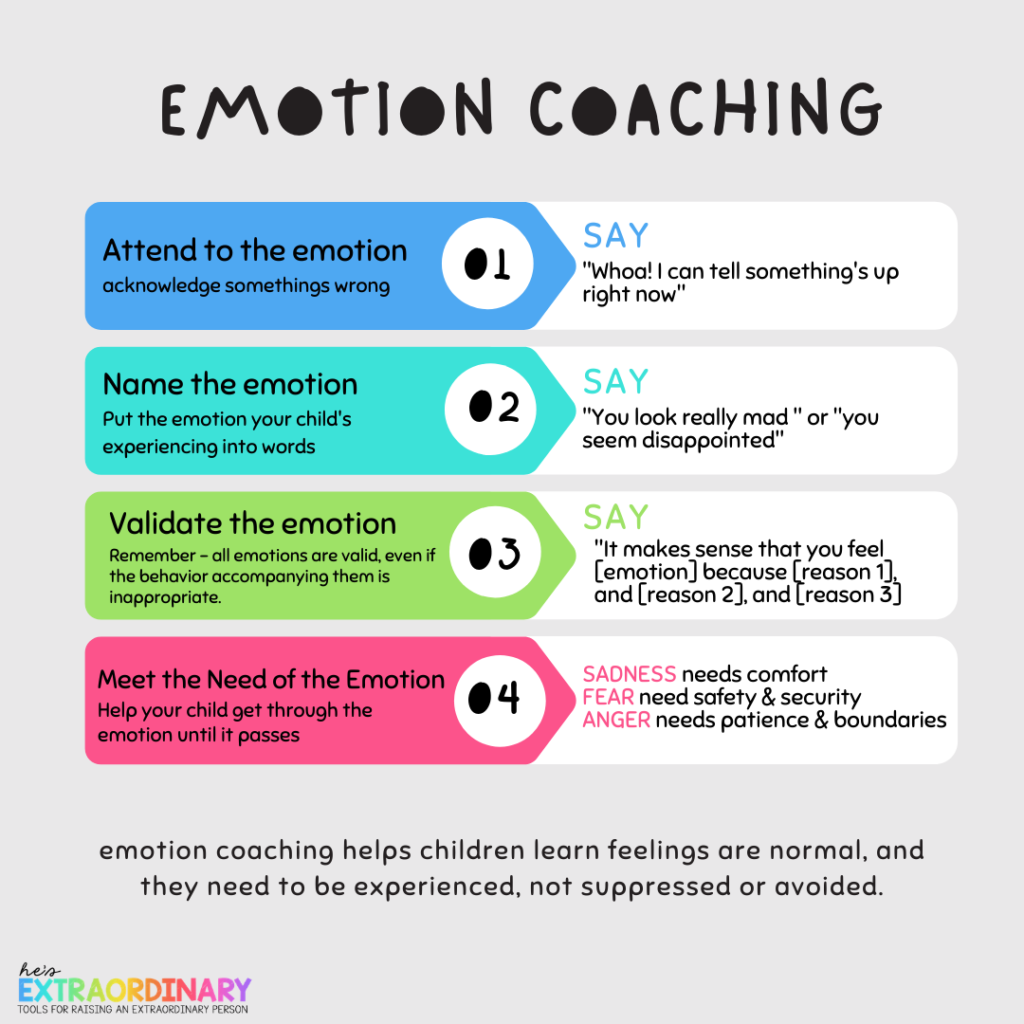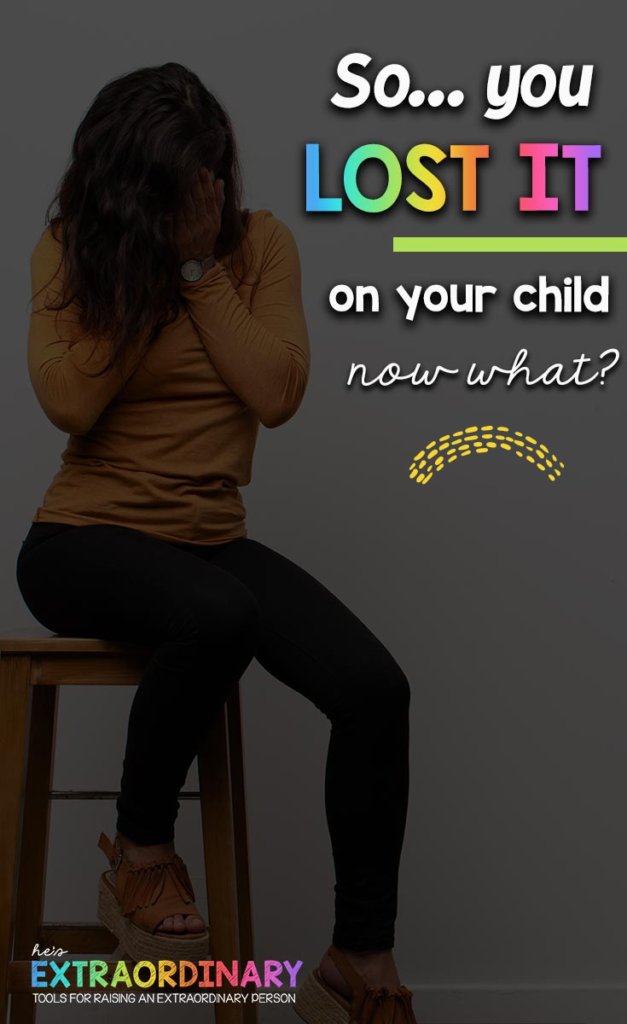So You Lost It On Your Kid … Now What?
What’s inside this article: Positive parenting advice for moms feeling guilty after yelling or over reacting during a difficult parenting moment. Tips to make restitution and positive strategies to try next time.
So, you’re feeling guilty right now because, well basically, because you lost your S#!T and yelled at your child.
It happens to everyone occasionally. If someone says it doesn’t, they’re lying. There’s no such thing as a perfect parent.
You may want to be the perfect parent, who is always calm, connected, and in tune with your child. But – that’s not what makes you a good parent.
Good parents aren’t calm all.the.time. – Good parents make restitution. Good parents repair. Good parents admit when they’re wrong.
What to do After Yelling At Your Child
Most likely, you’re teaching your child to express their emotions in healthy ways, so when you’ve done something not so healthy, that you wouldn’t want them to do, what should you do?
Apologize
First of all, tell your child you’re sorry.
Apologizing shows you have respect and empathy for your child, it helps repair hurt feelings, and it models appropriate behavior to your child.
According to Psychology Today, apologies are beneficial because :
- A person who has been harmed feels emotional healing when acknowledged by the wrongdoer.
- When we receive an apology, we no longer perceive the wrongdoer as a personal threat.
- An apology helps us to move past our anger and prevents us from being stuck in the past.
- Apologies open the door to forgiveness by allowing us to have empathy for the wrongdoer.
If you don’t apologize for overreacting, you are modeling unhealthy behaviors to your children. Children learn by watching everyone around them, especially their parents.
Explain (Don’t Blame)
It’s important to explain what happened, and why you were wrong – without blaming your child or their behavior.
You might want to say something like “I was having my own big feelings, and I yelled at you” or “I was feeling very overwhelmed and had a big reaction”
Make sure you use an “I” statement to explain.
You’re responsible for your own actions. Don’t use any phrases starting with the word “you” For example “You weren’t listening”, “You were frustrating me”, etc.
Be clear that it’s not their fault
Again, reinforce that regardless of what they did, you overreacting is never their fault.
You can just say “It’s never your fault when I yell” or “No matter what happens, you don’t deserve to be yelled at”
Explain What You’re Working On
Everybody makes mistakes – that’s something we tell our kids all the time.
Mistakes help us to grow.
Explain your mistake and what you’re working on doing better in the future. “I made a mistake. I am practicing managing my own big feelings while using a calm voice”
Reinforce That You Love Them
Always, always, always, remind your child how much you love them. Tell them they’re a good kid and you love them so much, no matter what.
Kids who feel good, do good.
Better Ways to Respond to Challenging Behavior
Feel like you’re stuck in a perpetual cycle of yelling and losing your temper? Like your child doesn’t listen, don’t change their behavior, UNTIL you flip out?
Then as much as you don’t want to flip out – it some how escalates to that point every time?
If you want to change the way you respond to challenging behavior, you need to learn more effective, positive ways to address behavior challenges.
The more times you do and practice something, the easier and more natural it becomes. Adopting a new method of addressing behavior might feel awkward at first, and seem like it’s not working (because your child’s used to a different reaction) but stick with it consistently, and you will see a change.
Emotion Coaching
Emotion Coaching is a communication method you can try with your child when they’re struggling with different uncomfortable feelings.
Emotion coaching helps children learn that their feelings are normal and need to be experiences, not expressed or avoided. It also validates their experiences and encourages development of healthier coping strategies.

The steps to emotion coaching:
It’s important to do these steps in order. It can feel awkward at first but with practice it begins to flow more naturally.
De-Escalation Strategies
The brain behaves differently during high-stress, emotional situations. Due to these changes in the brain, we actually need to respond differently and communicate differently than we normally would.
This video below explains how the brain works differently during different emotional states
Take some time to read over these 18 de-escalation strategies for when your child is using their “surviving brain” (watch video for details).
Read: 18 Effective De-Escalation Strategies For Defusing Meltdowns
These strategies are all evidence-based and taught/used in Non-Violent Crisis Intervention – you’ll see them applied anywhere that follows trauma-informed care practices, by therapists, clinicians, licensed youth-workers etc.
All 18 strategies won’t work for every child – but for most children, at least one of the strategies on the list will help when they’re experiencing a meltdown.
Struggling With Meltdowns Significantly?
If you’re struggling with meltdowns significantly, and it’s constantly escalating to a situation when you’re also losing your temper, feeling guilty, or just feeling like you can’t stay calm, it might also be helpful to checkout my mini online workshop, Meltdown Magic.
Meltdown Magic is a step-by-step solution for responding to challenging behavior in the heat of the moment.
Meltdown Magic Includes:
- Step by step video instructions for implementing Meltdown Magic
- When and how to use the 3 R’s
- Printable cheat sheet
- Fillable Meltdown Magic plan
- Idea banks with 100s of suggestions to help you get started
- 42 Page eBook “Preventing Meltdowns”
- Printable mini-script cards
Bottom Line
Children are resilient. They don’t need perfect parents who never slip up, never lose their cool, and never make mistakes.
They need parents who admit when they’re wrong, apologize, accepting responsibility instead of blaming, and make the effort to learn better strategies.
If you’re reading this article because you’re guilty for yelling at your child, just know, you are a great parent just because you’re committed to finding a better way.


